“Strength is Tension—Tension is Strength.”
I can still hear those words taught by StrongFirst Certified Master Instructor, Jason Marshall at the barbell course I attended a few years ago. Tension ties the body together to enable strong movement. Tension creates the structure that can hold and move heavy weight. Tension is the mind’s command to the body to brace for a difficult task. I had an appreciation of the importance of tension leading into last year, but I learned a lot more about it while recovering from major abdominal surgery last June after I had the distinct honor of donating my right kidney to my dear friend Dustin Rippetoe.
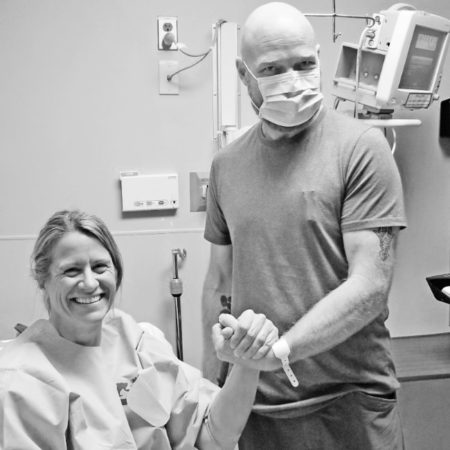
Inspired to Donate
Dustin is a StrongFirst Certified Team Leader. I had heard about his kidney disease and need for a transplant through StrongFirst and mutual friends, though we had never met each other in person at the time I decided to donate. My brother Seth is a nephrologist who cares for patients with kidney disease, so I already knew about living kidney donation. The inspiration to act came when I saw a news story about a living donor here in Mississippi. For me, it was a chance to be a part of something amazing, and to share the health that I was fortunate to possess. Many of us have been blood donors throughout our lives, so we understand giving something of ourselves literally in order to help others. As I told my friend Al Ciampa, “Donating a kidney is sort of like donating blood, x 1,000.”
I started the long and involved donor process, and over the next six months, Dustin and I went through all the steps to make the transplant a reality. I had a lot of questions along the way. There was a lot of waiting and wondering. I definitely had a few moments of fear and anxiety. Seth answered my questions and calmed me when things got crazy, but never once did I doubt my decision. Fortunately, Dustin and I were a match. I passed all the medical tests and was approved as a donor!
Everything went well on transplant day. The healthy kidney is working for Dustin, keeping him off dialysis, and we hope it will continue to do so for many years to come. Post-surgery, I am also doing quite well. Four months after the major surgery, I participated in StrongFirst’s October 2019 Tactical Strength Challenge and took first place in the Women’s Masters Division. How in the world did I do that? Answer: I rebuilt my strength, and in the process gained a new understanding of tension.
The surgery was quite a challenge, physically. I went from being a strong and healthy donor candidate one day to a weak and fragile patient the next. I was in the hospital for three days recovering with a six-and-a-half-inch long incision on my right side. Kidneys are located deep in the abdomen towards the spine, so the surgeon had to stretch and retract my abdominal muscles to enable the nephrectomy.
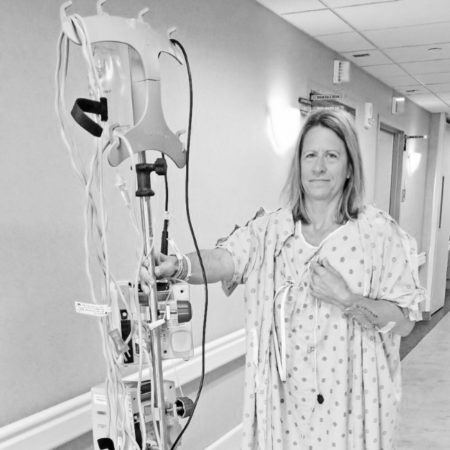
The invasiveness of the procedure led to some pain on initial recovery, but it was manageable and I could tell immediately that being strong prior to surgery was a huge advantage. The day after the transplant, when the nurse helped me stand up for the first time, we were both amazed at how easy it was for me. My strong back held me up, despite the abdominal trauma and incision. Dustin was up and walking before me on day two, but a few hours later I was also up and moving around. The nurse suggested I build up to walking to Dustin’s room next door, then two rooms down, then three rooms, but I was already walking laps in the hallways later that day. I thought, “I can do this! Resilience is the reward for building a strong body.”
The next two weeks were integral to my recovery. I was graciously hosted by some StrongFirst friends in Oklahoma, the Shrauners. They took wonderful care of me, allowing me to focus on healing. I walked about a mile each day and worked up to walking a few miles at a time. Otherwise I rested and enjoyed the leisure time by reading, writing, and visiting. I got plenty of sleep and ate well. My two-week check-up with the surgeon was great (yay!), and I was released. Back at home in Mississippi at the end of the third week, I was able to go back to work at my regular desk job and do most of my household tasks without any problems.
Post-Surgery Objective
My next objective was to rebuild my physicality. I really didn’t know what to expect post-surgery. I had read posts from some other living kidney donors who spoke of months and even years of fatigue, lack of strength, and weight gain after their procedures. I thought, “This could happen to me, too. But maybe they just don’t know the process of building strength and fitness.” I knew that process well from years of bike riding and strength training and was curious to see if I could put it to use for my own recovery.
Three weeks after surgery I started back to the gym on my regular schedule, but without weights. Being at the gym put me in a good mindset. Occasionally I would gaze longingly at the barbells and kettlebells, but the doctor’s orders were strict. “No lifting more than 20 pounds for six weeks.” In addition to giving the body a chance to focus on healing, the major risk during this post-surgery time is incisional hernia. This happens when intra-abdominal pressure and other stresses while lifting overwhelm tissue that hasn’t fully healed. No matter how fit or strong you are, it just takes time for the body to rebuild the “internal wrapping” that keeps your insides where they should be after you’ve been cut open and stitched back together.
Regaining good movement and breathing was my first area of focus. I did simple but essential movements like unweighted squats, unweighted single-leg deadlifts, unweighted get-ups, and presses with a 4kg kettlebell. Original Strength crawling, rocking, and other “resets” were also helpful. I could feel that my abdominal muscles were affected and weakened, and it took some time to regain deep diaphragmatic breathing. I had some swelling and discomfort, but no pain. I moved slowly and mindfully, paying close attention to how everything felt in every part of my body. Since the easy things had become challenging again, I took it as an opportunity to remind myself what it’s like to be a new trainee and focus on mastery of the basics.
It was during this time that I really started to gain new insights into tension. As I moved cautiously into previously doable ranges of motion, I could feel how tension works to move the body; how the movement of the arms and legs affects the torso. I paid close attention to breathing, especially tension in the diaphragm, and how that affected the abdominal muscles. I could feel abdominal pressure created by muscle tension and breath and learned to manage it much more precisely during movement. In these early stages of healing, I imagined handing a construction crew a set of specifications for a renovation project with the instructions, “Rebuild a body that is strong and moves well!”
At the end of the six weeks, I was cleared to “start back slowly” to previous training, including loaded movement. “Well, now what?” I wondered.“What can I do? What should I do?” There were plenty of different training approaches I could use, but what would be best? I narrowed it down to strength and aerobic endurance.
Post-Surgery Training
For strength, I chose barbell training with basic compound movements. I wanted a simple program to follow that I was already familiar with, so I used the Starting Strength linear progression which utilizes three sets of five reps per lift, three sessions per week. For lifts I chose the overhead press, squat, and deadlift and I alternated the overhead press with the bench press. I started exceptionally light with a working weight of 45, 55, 55, and 75 pounds respectively for overhead press, bench, squat and deadlift—just barely more than an empty bar. Each session, I incrementally increased the weight. Six sessions later at the end of the second week I was making good progress and was up to 65, 80, 105, and 175 pounds.
To determine how fast to increase the weight on the bar, I balanced my actual strength (which had decreased over the layoff), with the stress and recovery required for each session (keeping in mind that ongoing healing also required recovery), and the feeling of how much I could push the healing tissues. Because I had done the program before, I was able to assess my performance accurately and could tell the difference between discomfort from hard work and discomfort from anything surgery related. I was not afraid to work hard, and I knew I was getting stronger, but I was also cautious about pushing my body into something for which it wasn’t ready.
To get some more insight, I consulted a doctor-lifter I follow, Dr. Austin Baraki of Barbell Medicine. After describing my situation, I asked, “How do I know what is safe?” Dr. Baraki replied, “There isn’t going to be one absolute answer here, or a single threshold weight that I’d be particularly concerned about. It looks like you’re “starting low and going slow,” which is what I’d be doing too—that’s about all you can do to mitigate the risk. Remember there’s always a risk to not training as well, so I think at this point the risk/benefit tradeoff has tilted in the direction of training as you are. At six weeks, I’m not too worried about the status of the surgical site tissues.” This gave me confidence in my approach.
By the end of the fourth week, my working weights were at 85, 105, 135, and 205 pounds. Four weeks later at the end of the eighth week they were 90, 125, 180, and 260 pounds, and the work sets were challenging. I now felt that I had garnered the gains available from this linear progression and was ready to move back to more intermediate programming. Pre-surgery, my highest working weights for sets of five were 105, 135, 215, and 300, so these eight weeks of steady progressive overload training got me pretty close to my previous strength levels. I was thrilled with this result. Experiencing the steady and significant increase in strength felt miraculous!
During these weeks of increasing loads, I continued my study of tension. I was particularly aware of not creating too much outward pressure when I used the Valsalva maneuver (a specific breathing method that increases internal bracing), both with and without my lifting belt. (The belt was approved by my surgical team as it conveniently covered my scar, spreading the load for an additional safety measure.) Before each lift, particularly heavy squats and deadlifts, I took my time breathing in and ramping up the pressure and tension to perform the lift, feeling all the details and subtle nuances of intra-abdominal pressure and abdominal contraction. At no time did I feel in danger of overwhelming my healing tissues, but I was always aware of them.
Post-Surgery Performance
Everything was going so well that I decided to register for the Tactical Strength Challenge in October. Continuing the barbell training, I worked with my coach to peak the deadlift with heavy singles, added kettlebell snatches once or twice a week, and worked on my pullups. My TSC results: 305-pound deadlift, 2 pullups, and 139 snatches in five minutes with the 12kg kettlebell. That got me on top of the leaderboard for Women’s Masters Division. My comeback was complete! I felt truly back to my old form, undiminished by what I had been through, and infinitely richer from the experience.
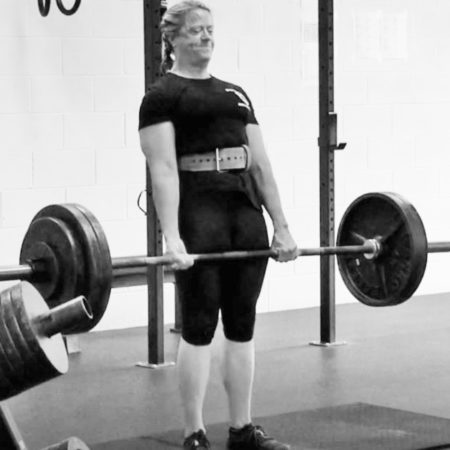
My TSC performance was even more special because the members at StrongFirst Certified Team Leader Jody Beasley’s gym, HMG Fitness in Birmingham, AL (and many others in the StrongFirst community) had participated in last year’s fundraisers for Dustin’s transplant. Enough money was raised to cover my travel expenses for testing and surgery. Another example of the StrongFirst community in action helping each other.

Concurrently with the strength training during my recovery, I returned to bike riding once a week for aerobic endurance. I started with 20 miles at an easy pace at week five, and increased the mileage and pace steadily until I was able to ride a 62 mile “metric century” in a local cycling event, at three months post-op. That part of recovery went extremely smoothly confirming that aerobic health built over many years does not quickly go away.

Strength Has a Greater Purpose
With both the bike event and the TSC behind me, I felt confident I was back to normal. But what about my kidney function? All of my lab tests since surgery have been great. My brother Seth had assured me going into this that one kidney can perform all required functions adequately for a healthy person. I have no lifestyle changes post-donation other than making sure to stay hydrated and to avoiding Ibuprofen and other NSAID medications, taking Tylenol instead if needed. I consider my scar a badge of honor and will continue to rebuild my body and mind even stronger than before.
This whole experience showed me the StrongFirst belief of “Strength has a greater purpose” in action, not only for my donation and recovery, but also for Dustin’s strength through his own adversity, and for the many people that helped us through this amazing journey. Sometimes we choose our challenges, and sometimes they choose us. Strength keeps us ready for these challenges and guides our recovery from them. I hope that my journey of rebuilding from surgery offers some insight to you when life provides you with an opportunity to make a comeback.
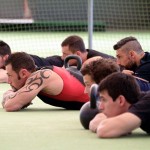
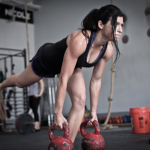
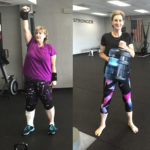

Anna thank you for posting this article, you are truly inspiring,
Thank you, Stuart! I appreciate the comment as well as all the other nice comments from others. Tomorrow is 1 year since surgery and Dustin and I are both doing well. We recorded a Zoom call along with Beth https://youtu.be/0keynYpzwgg for an update to the Facebook support page that she created to find him a donor and support the effort, which was followed and supported by many in the StrongFirst community! https://www.facebook.com/dustinrippetoesupportgroup/. This whole thing was definitely a team effort and enabled by so many wonderful people.
An inspiring message. An awesome journey of life and its purpose! Thank you for sharing.
Congratulations Anna! What an inspiration!
I can empathize. At age 50 I had an esophagectomy & pyloroplasty for end-stage Achalasia. It took a long time to make a comeback. I consulted with Dr. Mauro DiPasquale among many others.
Short story – at age 56 I competed in the Master’s TSC twice … and won it like you!
I will be competing in a Powerlifting meet in August (60th birthday) and hopefully the TSC in October.
Keep up the great work!!
Steve
That’s awesome, Steve! I’ll look for you on the leaderboard.
God bless you and your efforts, you are truly an exceptional and selfless person!
Huge respect Anna!
Your story is a great lesson and an example for me.
Thank you!
Stay healthy, stay strong!
Sergej
Düsseldorf
Germany
Amazing on so many level!
You rock 🙂
Your strength and selflessness are an inspiration, Anna.
Great story, great example, honour to learn from Anna.
On May 15, 2020 I will be also be 1 year post op after donating my kidney. Mine was taken from the front around my belly button. I also had an uneventful recovery. Up and walking hours after surgery, got “caught” sweeping the driveway about a week later and had my tools confiscated but no lifting over 10 lbs for 8 weeks was a killer. I walked and walked and walked. Have been lifting kettlebells for about 15 yrs and I too felt like the strength I created with those helped my recovery. I am back at it full strength. Great article.
Fantastic, Leah! Kidney donor sisters! Virginia Ann Jordan in the photo with me and Jody Beasley is also a living kidney donor. Glad to hear you are back to full strength.
“Strength has a greater purpose” – and Anna is leading by example from the front. Huge respect.
I can think of no greater way to use strength then to help save someone’s life. Our hats off to you! Very inspiring and I’m glad you’re training is going well, as we knew it would be!
Thank you for sharing your story. such a good example of true strength.
Thanks for this article, Anna. Very inspiring!
Strength has a greater purpose. What better illustration of this than your story?
An awesome story of many aspects of strength, starting with strength of character, Anna.
I love a good comeback story!
Yours is one of the best!
Thanks for sharing it!
You rock!
Anna,
Awesome in every way.
The world needs more people like you Anna!
You’re an amazing woman and I’m very happy to count you as a friend.